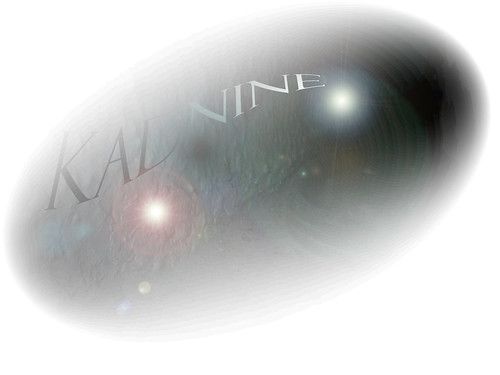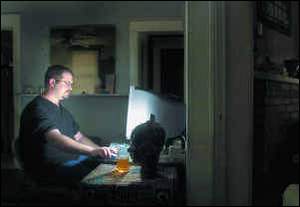Brought to you by the creeping nanny state
Anyone who reads this blog (or just spends enough time around me) already knows about the GIANT chip on my shoulder concerning "for the children" ad campaigns. Well, it's come to this my friends: Now Homeland Security is getting in on the act.
Sheesh! Wait, there's more.
Disgusting. But wait! There's even more!
[Elipses original, bold text mine]
I remember as a kid, my father took me around the house to test the smoke detectors. I remember my father showing me the drawer full of candles and flashlights and batteries. I remember him taking me to the mailbox across the street and saying, "In case of a fire, this spot is where you run to. Got it?"
But DHS and FEMA officials now believe that it's cool the other way around. Let the son teach the father! *sigh* The infantilization of adults is an ongoing trend in this country. When government officials see their fellow adults as children to be scolded, well, of course they see no problem with using little kids to shame their fellow citizens. This creeping nanny state crap simply must stop. Few things in this world anger me more. Words fail me, and I have the colorful vocabulary of a Marine!
Now, to be fair, the Washington Post article is well written and judiciously balanced. My beef here is not with the Post (for once.) The problem facing these (inept) government officials at Homeland is indeed a serious one. How do we encourage more citizens of this country to make basic disaster plans? And for those who just can't (or won't...) what about their kids? Should they suffer a firey death because their parents are too lazy to take a few basic precautions?
It's a thorny question, but an important one. Post reporter Sheridan fields it to the Red Cross, an old-school organization that's been preaching disaster preparedness since the DHS was just a twinkle in Congress' eye! -
Yeah. Simple education. That's a good place to start.
(Via: Hot Air Headlines)
See Also: Nanny State, The Death of the Grown Up
Boys and Girls, Can You Say Anthrax? Agencies Use Cartoons, Games and Even Rap in Twist on Disaster Lessons
By Mary Beth Sheridan
Washington Post Staff Writer
Wednesday, November 14, 2007; Page A01 [Note this is a front pager! - ed.]
... The weekly class, launched this year in D.C. schools, brings homeland security to the lunchbox set. It is part of a national effort to get families to prepare emergency kits and otherwise plan for disasters -- a message spread through cartoons, Disney shows and even first-responder camp.
The lessons aren't just aimed at kids, though. Consider Ready Eddie, a grinning, spiky-haired flashlight character created by Howard County. He tells children to pester Mom and Dad to store batteries, a radio and water.
Whiny kids as a homeland security tool? Exactly. After all, officials point out, children were the ones who bugged their parents to recycle, wear seat belts and stop smoking in past campaigns.
Sheesh! Wait, there's more.
Homeland Security first considered creating a children's program after parents requested kid-friendly material. At the same time, the agency was consulting with advertising experts on how to get more people to stockpile emergency supplies and make family plans for disaster. It gradually saw the potential in the underage crowd.
"There was kind of unanimous agreement that . . . if you hook the children, you hook the parents," said George Foresman, a former Homeland Security official who oversaw the launch of Ready Kids last year.
Disgusting. But wait! There's even more!
And the worst programs? Let's just say bureaucrats and youth culture can be a fearsome mix.
Consider the FEMA for Kids rap:
Disaster . . . it can happen anywhere,
But we've got a few tips, so you can be prepared
For floods, tornadoes, or even a 'quake,
You've got to be ready -- so your heart don't break.
Disaster prep is your responsibility
And mitigation is important to our agency . . .
Class dismissed, kids. Go forth and mitigate.
[Elipses original, bold text mine]
I remember as a kid, my father took me around the house to test the smoke detectors. I remember my father showing me the drawer full of candles and flashlights and batteries. I remember him taking me to the mailbox across the street and saying, "In case of a fire, this spot is where you run to. Got it?"
But DHS and FEMA officials now believe that it's cool the other way around. Let the son teach the father! *sigh* The infantilization of adults is an ongoing trend in this country. When government officials see their fellow adults as children to be scolded, well, of course they see no problem with using little kids to shame their fellow citizens. This creeping nanny state crap simply must stop. Few things in this world anger me more. Words fail me, and I have the colorful vocabulary of a Marine!
Now, to be fair, the Washington Post article is well written and judiciously balanced. My beef here is not with the Post (for once.) The problem facing these (inept) government officials at Homeland is indeed a serious one. How do we encourage more citizens of this country to make basic disaster plans? And for those who just can't (or won't...) what about their kids? Should they suffer a firey death because their parents are too lazy to take a few basic precautions?
It's a thorny question, but an important one. Post reporter Sheridan fields it to the Red Cross, an old-school organization that's been preaching disaster preparedness since the DHS was just a twinkle in Congress' eye! -
Kathleen J. Tierney, director of the Natural Hazards Center at the University of Colorado, said the best programs for kids integrate catastrophes into subjects such as science or social studies, giving children a broader understanding of the world. The Red Cross tries to do that with a program called Masters of Disaster, which is used in some area schools.
Yeah. Simple education. That's a good place to start.
(Via: Hot Air Headlines)
See Also: Nanny State, The Death of the Grown Up

